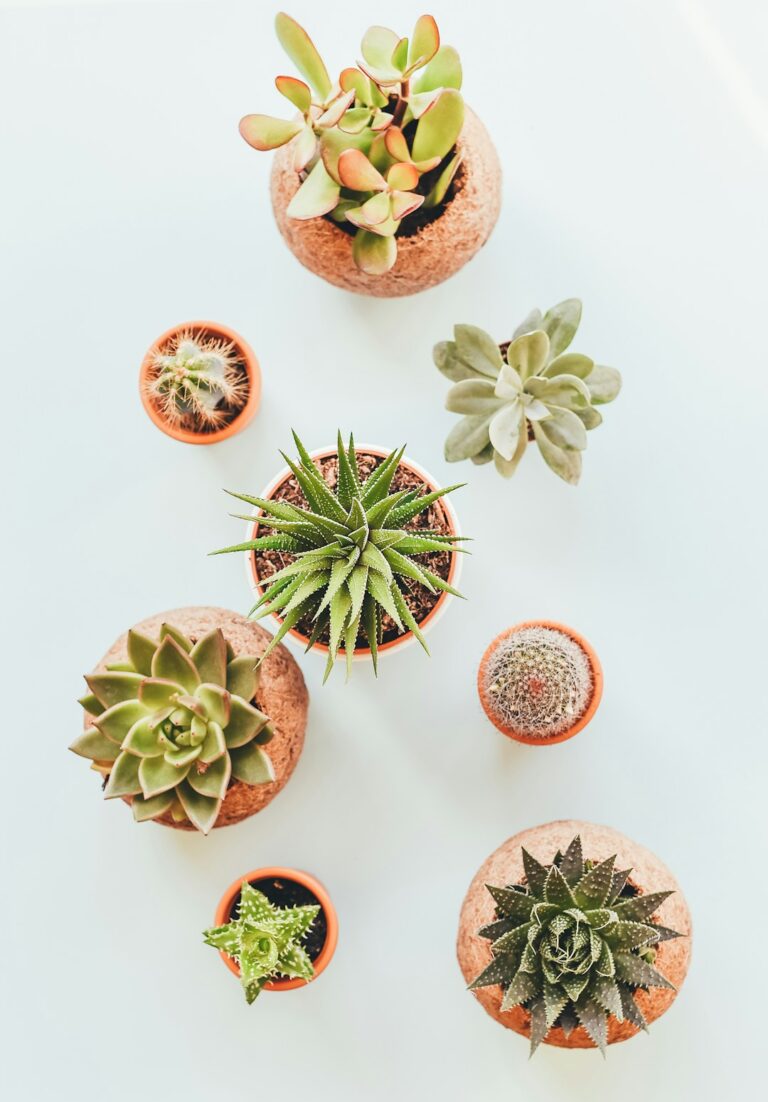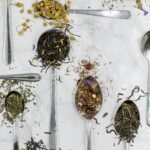Support our educational content for free when you purchase through links on our site. Learn more
Camellia sinensis Assamica: Unveiling the Secrets of the Mighty Tea Plant [2024]
Did you know that behind every cup of tea lies a fascinating plant called Camellia sinensis assamica? This remarkable variety of the Camellia sinensis species is responsible for producing some of the most beloved teas in the world. In this article, we will delve into the depths of this tea plant, exploring its history, cultivation, health benefits, and more. So grab your favorite tea mug and join us on this journey of discovery!
Table of Contents
- Quick Answer
- Quick Tips and Facts
- Background: The Story of Camellia sinensis Assamica
- Unveiling the Cultivars of Camellia sinensis Assamica
- Exploring the Mighty Description of Camellia sinensis Assamica
- Mastering the Art of Cultivating Camellia sinensis Assamica
- Unraveling the Health Effects of Camellia sinensis Assamica
- Decoding the Biosynthesis of Caffeine in Camellia sinensis Assamica
- Discovering the Primary Green Tea Catechins in Camellia sinensis Assamica
- FAQ
- Conclusion
- Recommended Links
- Reference Links
Quick Answer
Camellia sinensis assamica is a variety of the Camellia sinensis plant species that is widely cultivated for tea production. It is an evergreen shrub or small tree that thrives in tropical and subtropical climates. This tea plant variety is responsible for producing a wide range of tea types, including white, yellow, green, oolong, dark (including pu-erh), and black tea. Camellia sinensis assamica contains primary green tea catechins, such as epigallocatechin, epigallocatechin gallate, epicatechin gallate, and epicatechin. While there is no high-quality evidence to support significant health benefits, tea enthusiasts continue to enjoy the rich flavors and aromas that this mighty tea plant offers.
CHECK PRICE on: Amazon | Walmart | Etsy
Quick Tips and Facts
Before we dive deeper into the world of Camellia sinensis assamica, here are some quick tips and facts to pique your interest:
✅ Camellia sinensis assamica is a variety of the Camellia sinensis plant species that is native to the Assam region of India.
✅ This tea plant variety is known for its larger leaves and robust flavor profile.
✅ Camellia sinensis assamica is primarily cultivated in tropical and subtropical regions, including India, China, Sri Lanka, and parts of Africa.
✅ The leaves of Camellia sinensis assamica contain approximately 4% caffeine.
✅ The primary green tea catechins found in Camellia sinensis assamica contribute to its antioxidant properties.
✅ Camellia sinensis assamica is susceptible to pests and diseases, including caterpillars and fungal infections.
Now that we have whetted your tea-loving appetite, let’s explore the captivating background and history of Camellia sinensis assamica.
Background: The Story of Camellia sinensis Assamica
Imagine yourself in the lush tea gardens of Assam, India, where the story of Camellia sinensis assamica begins. It was in this region that British explorers first encountered this unique tea plant variety in the early 19th century. The robust flavor and distinctive characteristics of the tea produced from these plants caught the attention of tea enthusiasts worldwide.
Camellia sinensis assamica, also known as Assam tea or Assamica tea, quickly gained popularity for its bold and malty flavor. The tea produced from this variety became the foundation of the famous Assam black tea, which is cherished by tea connoisseurs for its rich and full-bodied taste.
Unveiling the Cultivars of Camellia sinensis Assamica
The world of Camellia sinensis assamica is not limited to a single cultivar. In fact, there are hundreds of known cultivars, each with its own unique characteristics and flavor profiles. Let’s take a closer look at some of the notable cultivars of Camellia sinensis assamica:
| Cultivar | Flavor Profile | Region of Cultivation |
|---|---|---|
| Benifuuki | Floral and Fruity | Japan |
| Fushun | Sweet and Nutty | China |
| Kanayamidori | Vegetal and Umami | Japan |
| Meiryoku | Grassy and Refreshing | Japan |
| Saemidori | Smooth and Creamy | Japan |
| Okumidori | Bold and Robust | Japan |
| Yabukita | Balanced and Aromatic | Japan |
Each cultivar brings its own unique flavor notes to the tea produced from Camellia sinensis assamica leaves. Exploring the diverse range of cultivars is like embarking on a flavorful adventure through the world of tea.
Exploring the Mighty Description of Camellia sinensis Assamica
Camellia sinensis assamica is an evergreen shrub or small tree that can reach heights of up to 15 meters. Its leaves are larger and broader compared to the leaves of Camellia sinensis var. sinensis, another variety of the tea plant. The leaves of Camellia sinensis assamica have a glossy, dark green appearance, which adds to the visual appeal of tea gardens.
The mighty tea plant is known for its resilience and ability to thrive in tropical and subtropical climates. It requires a minimum of 127 cm of rainfall per year, making regions like Assam, India, and Yunnan, China, ideal for its cultivation. The combination of abundant rainfall, fertile soil, and the right climatic conditions contributes to the unique flavor and aroma of the tea produced from Camellia sinensis assamica.
Mastering the Art of Cultivating Camellia sinensis Assamica
Cultivating Camellia sinensis assamica requires skill, patience, and a deep understanding of the plant’s needs. Here are some essential tips for successfully growing this mighty tea plant:
-
Choose the Right Location: Camellia sinensis assamica thrives in well-drained soil and requires partial shade to protect it from intense sunlight.
-
Prepare the Soil: Ensure that the soil is rich in organic matter and has a slightly acidic pH level (around 6.0 to 6.5).
-
Planting: Plant the tea bushes at a distance of approximately 1 meter apart to allow ample space for growth.
-
Watering: Provide regular watering, especially during dry spells, to keep the soil moist but not waterlogged.
-
Pruning: Prune the tea bushes regularly to promote new growth and maintain their shape.
-
Pest and Disease Control: Monitor the tea plants for pests and diseases, such as caterpillars and fungal infections. Take appropriate measures, such as using organic pesticides, to protect the plants.
By following these guidelines, you can embark on your own tea-growing adventure and experience the joy of cultivating Camellia sinensis assamica.
Unraveling the Health Effects of Camellia sinensis Assamica
Camellia sinensis assamica has long been associated with various health benefits, although the scientific evidence supporting these claims is limited. Here are some potential health effects attributed to the consumption of tea made from Camellia sinensis assamica:
✅ Antioxidant Properties: The primary green tea catechins found in Camellia sinensis assamica, such as epigallocatechin, epigallocatechin gallate, epicatechin gallate, and epicatechin, contribute to its antioxidant properties.
✅ Boosted Metabolism: Some studies suggest that the caffeine content in Camellia sinensis assamica may help boost metabolism and promote weight loss.
✅ Heart Health: Tea made from Camellia sinensis assamica may have a positive impact on heart health, potentially reducing the risk of cardiovascular diseases.
✅ Mental Alertness: The combination of caffeine and other compounds in Camellia sinensis assamica may help improve mental alertness and focus.
While these potential health benefits are intriguing, it’s important to note that more high-quality research is needed to establish definitive conclusions. As with any dietary consideration, it’s always best to consult with a healthcare professional for personalized advice.
Decoding the Biosynthesis of Caffeine in Camellia sinensis Assamica
Caffeine, the beloved stimulant found in tea, plays a significant role in the flavor and effects of Camellia sinensis assamica. The biosynthesis of caffeine in this tea plant variety involves a fascinating process. Here’s a simplified breakdown of how caffeine is produced:
-
Purine Metabolism: The biosynthesis of caffeine begins with the breakdown of purine compounds, such as xanthosine and 7-methylxanthosine.
-
Methyltransferase Enzymes: Specific methyltransferase enzymes, including caffeine synthase, catalyze the transfer of methyl groups to the purine compounds, resulting in the formation of caffeine.
-
Caffeine Accumulation: The caffeine produced is then stored in the leaves of Camellia sinensis assamica, contributing to its characteristic flavor and stimulating effects.
The biosynthesis of caffeine in Camellia sinensis assamica is a complex process that adds to the allure of this mighty tea plant.
Discovering the Primary Green Tea Catechins in Camellia sinensis Assamica
Camellia sinensis assamica is rich in primary green tea catechins, which are powerful antioxidants. These catechins contribute to the unique flavor and potential health benefits of tea made from this tea plant variety. Here are the primary green tea catechins found in Camellia sinensis assamica:
✅ Epigallocatechin (EGC)
✅ Epigallocatechin Gallate (EGCG)
✅ Epicatechin Gallate (ECG)
✅ Epicatechin (EC)
These catechins are known for their antioxidant properties, which help protect the body against oxidative stress and may have various health benefits. The specific composition and concentration of catechins can vary depending on factors such as the cultivar, growing conditions, and processing methods.
Now that we have explored the depths of Camellia sinensis assamica, let’s address some frequently asked questions to further enhance your understanding.
FAQ
What is the difference between Camellia sinensis and Assamica?
Camellia sinensis is the species of the tea plant, while Camellia sinensis assamica is a variety within that species. The main difference lies in the characteristics of the leaves and the flavor profile of the tea produced. Camellia sinensis assamica is known for its larger leaves and robust flavor, while Camellia sinensis var. sinensis has smaller leaves and a more delicate flavor.
What are the benefits of Camellia sinensis var Assamica?
Camellia sinensis assamica is rich in antioxidants, including primary green tea catechins, which contribute to its potential health benefits. These benefits may include antioxidant properties, boosted metabolism, potential heart health benefits, and improved mental alertness. However, it’s important to note that more research is needed to establish definitive conclusions.
Is Camellia sinensis the same as tea tree?
No, Camellia sinensis is not the same as the tea tree (Melaleuca alternifolia). Camellia sinensis is the scientific name for the tea plant, while the tea tree refers to a different plant species altogether. The tea tree is known for its essential oil, which is used in various skincare and medicinal products.
Read more about “Can I Grow My Own Tea Tree? The Ultimate Guide to Growing Tea Plants at Home …”
Is assam tea Camellia sinensis?
Yes, Assam tea is made from the leaves of Camellia sinensis assamica. The region of Assam, India, is renowned for its production of black tea made from this tea plant variety. Assam tea is known for its bold and malty flavor, making it a favorite among tea enthusiasts.
We hope these answers have shed light on some common questions about Camellia sinensis assamica. Now, let’s wrap up our exploration with a thoughtful conclusion.
Read more about “Can You Grow Your Own Camellia sinensis? …”
Conclusion
Camellia sinensis assamica, the mighty tea plant, has captivated tea lovers around the world with its robust flavor and unique characteristics. From the lush tea gardens of Assam to the tea cups of tea enthusiasts, this tea plant variety has left an indelible mark on the world of tea.
Throughout this article, we have uncovered the secrets of Camellia sinensis assamica, exploring its background, cultivars, description, cultivation, health effects, biosynthesis of caffeine, and primary green tea catechins. While the scientific evidence supporting health benefits may be limited, the joy and pleasure derived from sipping a cup of tea made from this tea plant variety are undeniable.
So, whether you prefer the boldness of Assam black tea or the delicate flavors of green tea, Camellia sinensis assamica continues to be a source of inspiration and delight for tea enthusiasts worldwide. Embrace the world of tea and let the mighty Camellia sinensis assamica transport you to a realm of flavors and aromas like no other.
Recommended Links
- Green Tea Cultivation
- Herbal Tea Planting
- Tea Plant Varieties
- Soil and Climate for Tea
- Can You Grow Your Own Camellia sinensis? 2023
Reference Links
- Wikipedia: Camellia sinensis
- Camellia sinensis Assamica on Amazon
- Camellia sinensis Assamica on Walmart
- Camellia sinensis Assamica on Etsy
In addition to the reference links provided, we encourage you to explore reputable sources to further expand your knowledge of Camellia sinensis assamica and the world of tea. Happy tea drinking!






